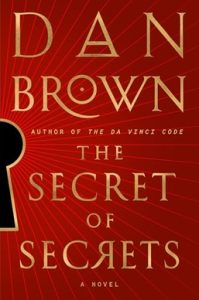Arthur C. Clarke’s 2010: Odyssey Two, the thrilling sequel to his iconic 2001: A Space Odyssey, is a masterpiece of science fiction that continues to captivate readers with its blend of hard science, visionary storytelling, and exploration of cosmic mysteries. Available at Sarasavi Book Shop, this novel is an essential read for anyone fascinated by space, technology, and humanity’s role in the universe. In 2010, Clarke builds on the themes he introduced in 2001, deepening the exploration of artificial intelligence, extraterrestrial life, and the nature of human evolution.
Plot Summary
The novel picks up nine years after the mysterious ending of 2001, where astronaut Dave Bowman disappeared near Jupiter’s moon, Io, leaving behind the enigmatic monolith and the malfunctioning supercomputer HAL 9000. 2010: Odyssey Two follows a new team of astronauts and scientists from the U.S. and the Soviet Union as they embark on a joint mission to solve the mysteries left by Bowman’s disappearance and the monolith’s purpose.
Led by Dr. Heywood Floyd, a character from the original story, the mission’s crew includes top experts who are driven by scientific curiosity and political urgency during the Cold War era. As they venture to Jupiter and its moons, they encounter unexpected phenomena that suggest an unknown and powerful force guiding the events around them. Clarke intricately weaves together themes of science, politics, and human ambition, all set against the backdrop of a beautifully detailed and mysterious cosmos.
Themes and Analysis
- The Search for Knowledge: At the heart of 2010 lies humanity’s insatiable curiosity and desire for understanding. Clarke uses the characters’ journey into the depths of space as a metaphor for the human quest to unravel the universe’s mysteries. This exploration goes beyond Earth’s boundaries, hinting at the existence of higher intelligence and advanced civilizations.
- Humanity vs. Technology: Clarke delves into the complex relationship between humans and technology, particularly through HAL 9000, the artificial intelligence that played a central role in 2001. In 2010, HAL’s character undergoes an evolution as the crew faces the ethical dilemmas of reactivating him, reflecting the ongoing moral questions about the development of artificial intelligence and its potential impacts.
- Political Tensions and Cooperation: Set against the tensions of the Cold War, 2010 explores how political rivalries shape the mission. Clarke’s depiction of cooperation between the U.S. and Soviet crew members serves as both a hopeful vision of unity and a reminder of the competitive drive that propels human exploration. This theme resonates even today as space exploration continues to be influenced by both collaboration and competition.
- Extraterrestrial Life and Evolution: Clarke’s portrayal of extraterrestrial intelligence and cosmic evolution is nothing short of awe-inspiring. The monolith, a recurring symbol in the series, represents the possibility of advanced civilizations influencing human development. The novel hints at the idea that humanity may only be one step in a larger evolutionary chain—a perspective that challenges readers to contemplate our place in the universe.
Writing Style and Scientific Accuracy
Arthur C. Clarke was known for his dedication to scientific realism, and 2010 reflects his meticulous attention to detail. The novel’s technical descriptions are grounded in scientific concepts, making it both informative and accessible. Clarke uses clear, concise language to describe advanced technology and astronomical phenomena, allowing readers to grasp complex ideas without losing the narrative’s flow. His skillful balance of scientific accuracy and engaging storytelling makes 2010 an exemplary piece of hard science fiction.
Clarke’s Visionary Insight
Clarke’s prescience shines throughout 2010, as he imagines technological advancements and societal issues that resonate even decades after the book’s publication. The way he envisions artificial intelligence, space exploration, and geopolitical dynamics reflects a deep understanding of human nature and the scientific possibilities of the future. Clarke’s optimistic outlook on humanity’s potential and his commitment to exploring big questions about existence make 2010 a thought-provoking journey.
Why 2010: Odyssey Two Is a Must-Read
2010: Odyssey Two is a compelling continuation of the journey that began in 2001: A Space Odyssey. Clarke invites readers to reflect on the boundaries of human knowledge, the potential of artificial intelligence, and the significance of extraterrestrial life. The novel’s thoughtful exploration of these themes, paired with its gripping narrative and scientifically grounded world-building, makes it a must-read for science fiction fans and anyone intrigued by the future of humanity.
Conclusion
Arthur C. Clarke’s 2010: Odyssey Two is more than just a science fiction novel; it’s an intellectual exploration of humanity’s destiny and place in the cosmos. Clarke’s vision for the future, coupled with his scientific rigor and empathetic understanding of human nature, creates a timeless story that continues to inspire readers. For those who love science fiction and cosmic mysteries, 2010 is an unforgettable adventure, available for exploration at Sarasavi Book Shop.






